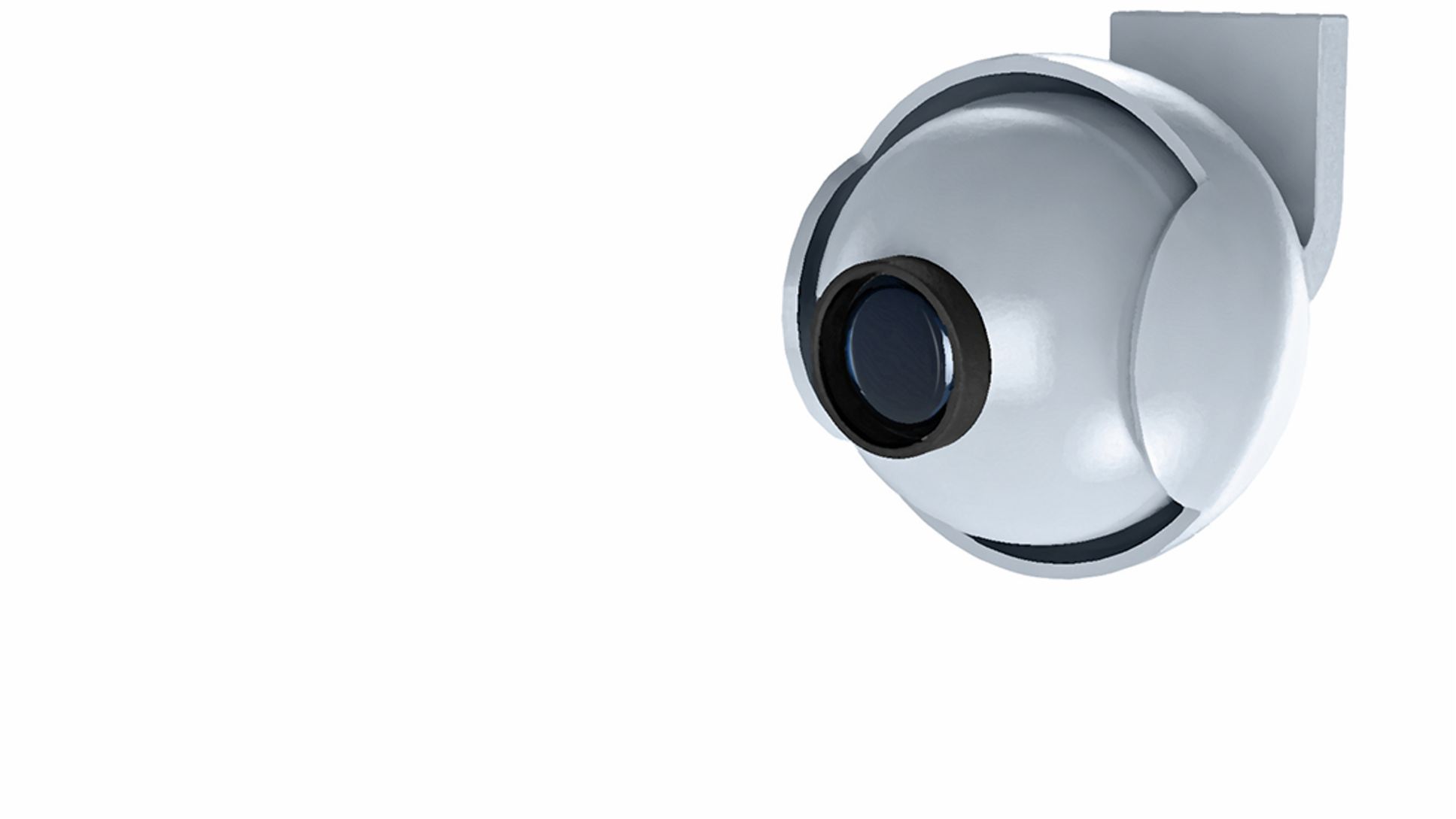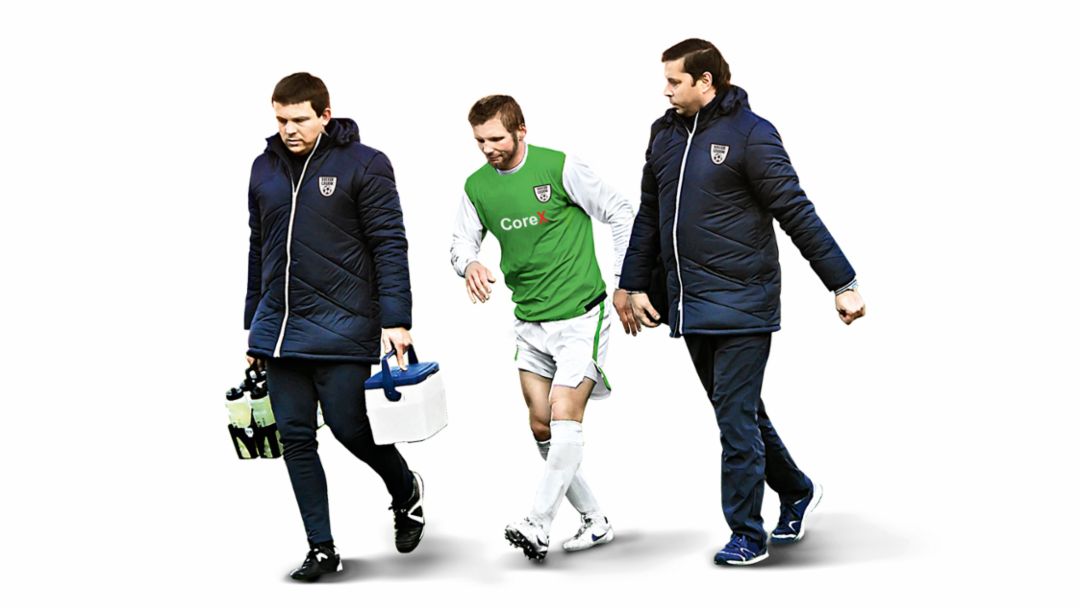Technology has the potential to leave virtually no decision in soccer to chance. Millions of data from matches, players, and referees can be compiled and channeled into real-time analyses. These analyses are playing an ever greater role in lineup and tactical decisions, as well as on the transfer market. Microchips worn by the players plus all manner of digital technology are what make this possible.
A last-minute goal can mean more than just winning a match. In the Champions League, for example, reaching the next round means bonuses and television rights worth tens of millions of euros to the clubs. For third-division teams, just reaching the next round in the DFB Cup can be more lucrative than ticket sales for the entire season. It’s no wonder, then, that pro soccer clubs and associations do not wish to leave anything to chance.
These days, it’s the rare coach who doesn’t use technical aids for practice sessions and tactics. Although video analyses were all the rage until just a few years ago, new technologies—and their millions of data—are becoming a set part of practices and games. Complex software can derive much more from this huge amount of data than can the eye alone. The technology captures every movement of each player, and their individual levels of fitness. It is almost like a “Big Brother” scenario in soccer.
Fraunhofer Institute has developed radiobased tracking system
The Fraunhofer Institute for Integrated Circuits (IIS) in Nuremberg is breaking new ground in data-based play in Germany. Its RedFIR radiobased tracking system is currently being used by TSG 1899 Hoffenheim and is installed in 1. FC Nürnberg’s stadium. Up to 144 chips on the ball and the players’ shoes and jerseys transmit 50,000 pieces of information a second to 12 receivers in the stadium. This data is processed with the help of the SAP HANA platform, which records the exact position of all the players on a 3D surface as well as game-specific information including ball possession, passes, crosses, and shots on goal.
It even records real-time performance data such as the height of jumps, the number of steps, and speed. This lets coaches see the performance level of each player at all times, within an accuracy of several decimal places. The information can be used to make decisions about lineups or tactics. “Right now, our system may only be used for practice games,” says René Dünkler, technology marketing director for Fraunhofer IIS, “because regulations from international organizations like FIFA and IFAB do not allow players to wear transmitters. But changes are under discussion.”
Prozone: One of its core technologies is its mobile tracking system
Analyzing play is nothing new, of course. The British company Prozone has been gathering data on professional soccer since 1995. Today, the company is part of Stats, the world’s leading data seller, and supplies more than 200 top-level clubs with information—including the German national team, FC Bayern München, Arsenal FC, Paris Saint-Germain, and FC Barcelona.
One of Prozone’s core technologies is its mobile tracking system. Up to five HD cameras are used to capture an entire match. By means of contrast recognition systems—in which dark and light areas are differentiated from one another—the images are converted to coordinates. This data enables coaches to evaluate the performance of each player in terms of speed, movement patterns, ball contact, and tackles. The major advantage of this system is that it can be used in games as well as practices because it does not use transmitters and therefore does not violate current FIFA regulations.
It’s valuable to have data on the game itself, but also on the physical condition of the players. The German national team has been using not only Prozone but also a solution from the Adidas sports goods manufacturer since the start of its preparations for the 2014 Football World Cup in Brazil. The miCoach Elite Team System from Adidas uses sleeveless compression jerseys with integrated sensor technology to send physiological data to coaches’ tablets in real time. These include not only speed, acceleration, and distance covered but also parameters like heart rates.
The DFB team physician, Professor Tim Meyer, is not entirely in favor of this flood of information. “We can gather much more data these days than we can actually use,” he notes. “Big data only makes sense if you can actually apply the data—not simply be fascinated by it.” He does consider some information beyond purely positional data to be useful for the future, however. “I’d find it interesting to measure the core body temperature of the players during matches, for example. That could help identify exhaustion more accurately and enable better decisions about substitutions. We already have chips you can swallow that provide this information. They’re still very expensive, though. And of course you’d have to make sure they don’t pose any health risks.”
Data: A sector worth billions of euros
The flood of information in soccer is also of interest to related industries, and has developed into a sector worth billions of euros. Adidas is installing chips in balls to test how new materials in soccer shoes affect their flight properties. Computer game manufacturers like EA Sports or SEGA are using the data to make their programming even more realistic. Media outlets, online platforms, databases, and betting organizations purchase analyses to use for their own purposes. Legal sports betting organizations alone had a turnover of around 4.5 billion euros in Germany in 2014, in large part from online activity, and with soccer-related picks way out in front.
The betting companies use the data to recalculate their payouts on a continuous basis during the matches. Whether a team is ahead or behind is not necessarily the most important criterion, because real-time data can provide solid forecasts on the course of play to come. Some algorithms can also be used to detect the possibility of manipulation. In addition to player and team performance, the technology also records what the referees do. Certain patterns of movement by the players and refs can yield at least the suggestion that something is deviating from the norm.
Jens Urlbauer: “What’s important in all of this technology is the individual”
SAP project director Jens Wittkopf says the greatest advantage of this data lies in the search for talent. A software specialist, he observes that “the use of big data is having a revolutionary effect on talent scouting. Above a certain level, you can find comprehensive data on young players from national teams worldwide. At the leading clubs, just a few of these up-and-coming players will make it onto their pro teams. This data will make it easier for clubs to find the right striker, let’s say, including candidates from other countries.” But even the managing director of Prozone, Jens Urlbauer, doesn’t think computers will ever take over the job of determining lineups. “What’s important in all of this technology is the individual who analyzes the huge amounts of data it generates. And for that you need experience and a deep understanding of soccer.”
In theory, machines could even replace highly paid professional human players at some point. But that is still a number of years away. According to Professor Jürgen Schmidhuber, co-director of the Swiss Institute for Artificial Intelligence Research (IDSIA), “No robot is anywhere near the level of good human players right now. But that will not always be the case.”
About Porsche Consulting GmbH
Headquartered in Bietigheim-Bissingen, Porsche Consulting GmbH is a subsidiary of the Stuttgart-based sports car manufacturer Dr. Ing. h.c. F. Porsche AG. Founded in 1994 with a staff of four, it currently employs more than 380 people. An international-ly active company with four subsidiaries of its own in Milan, São Paulo, Atlanta, and Shanghai, it is one of Germany’s leading management consultancies. Its experts in operational excellence advise large corporations and medium-sized companies worldwide in the automotive, aviation and aerospace, and mechanical and plant en-gineering industries. Clients also come from the financial services, consumer goods, retail, and construction sectors.
Info
Text first published in „Porsche Consulting – The Magazine”, Issue 17
Author: Andreas Weiher // Illustrationen/Grafik: Porsche Consulting





